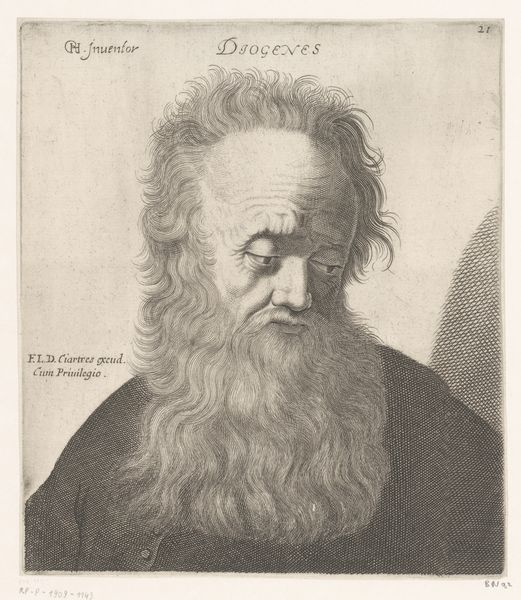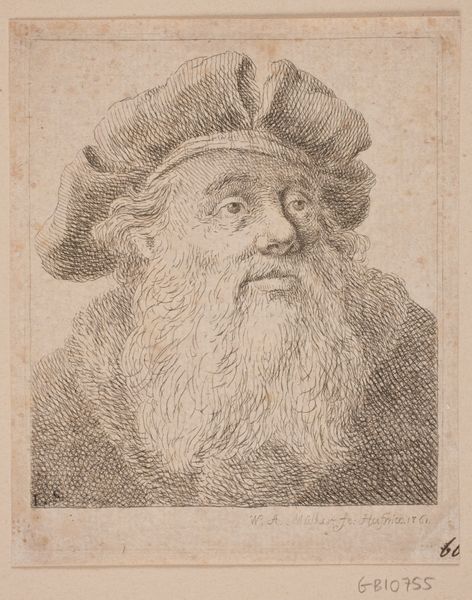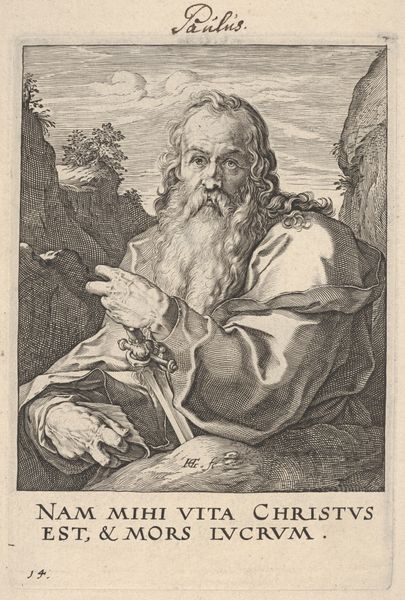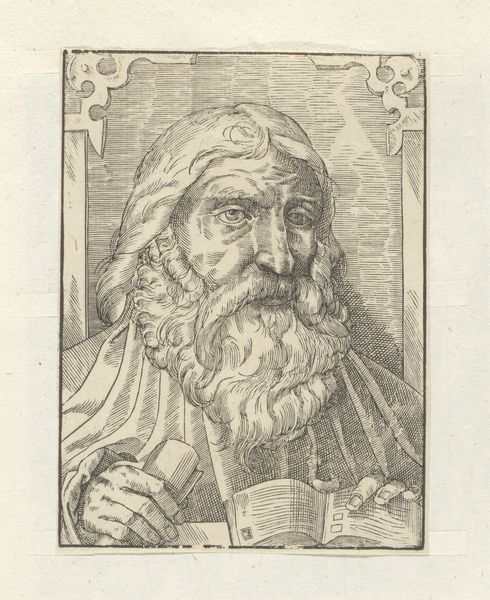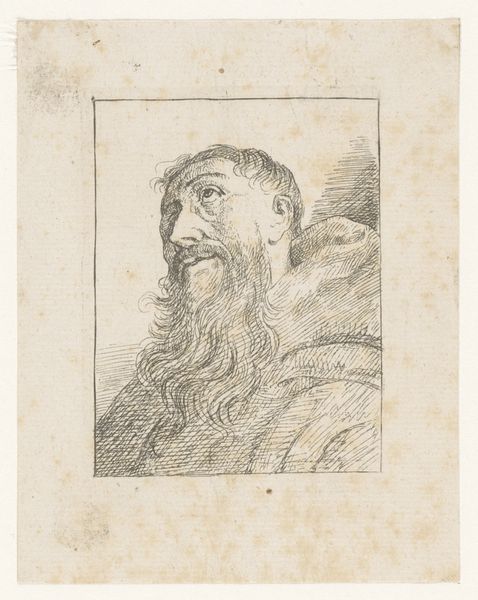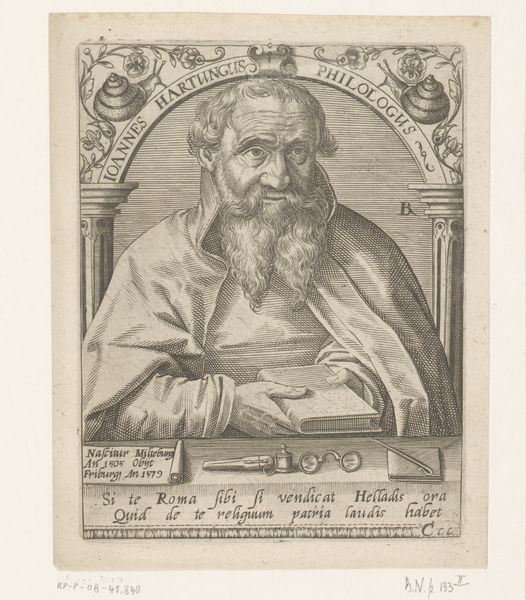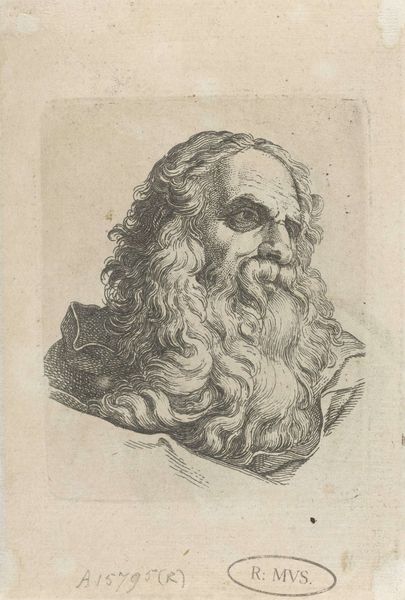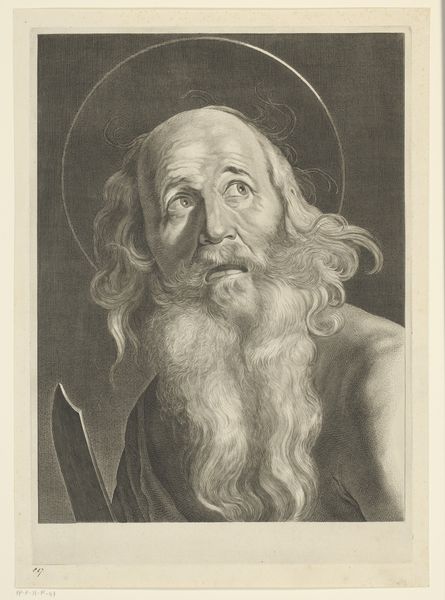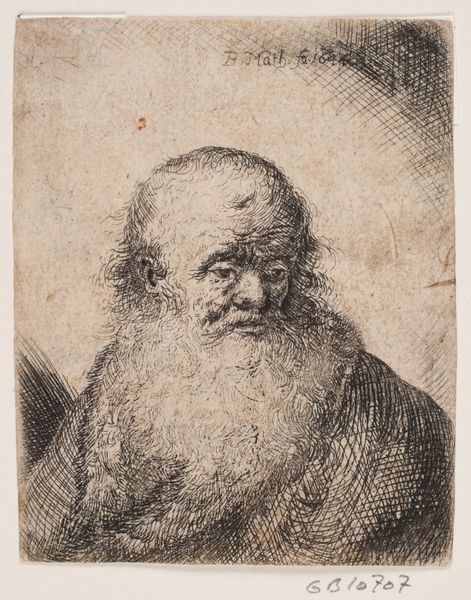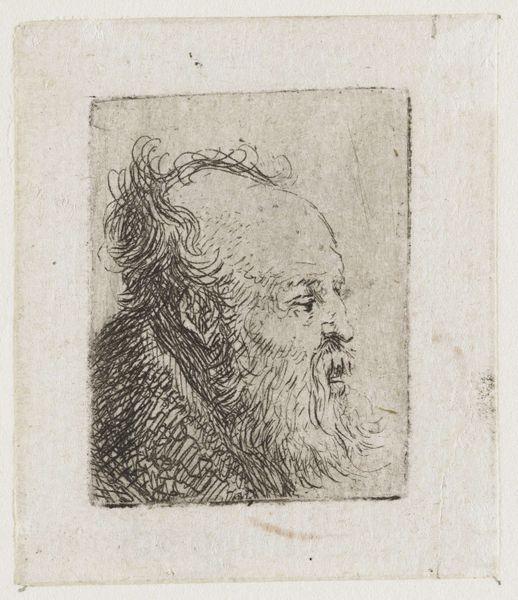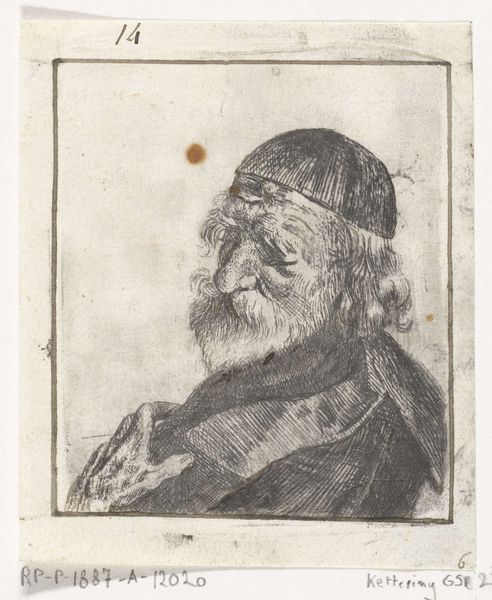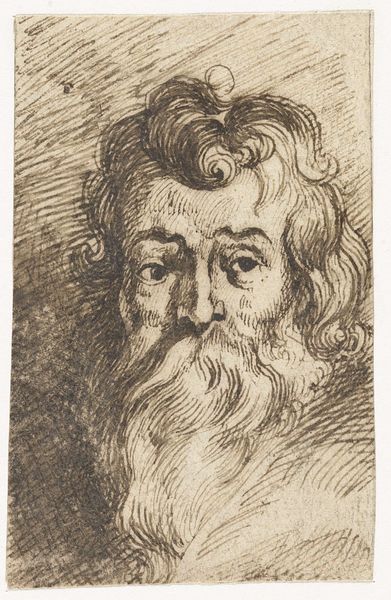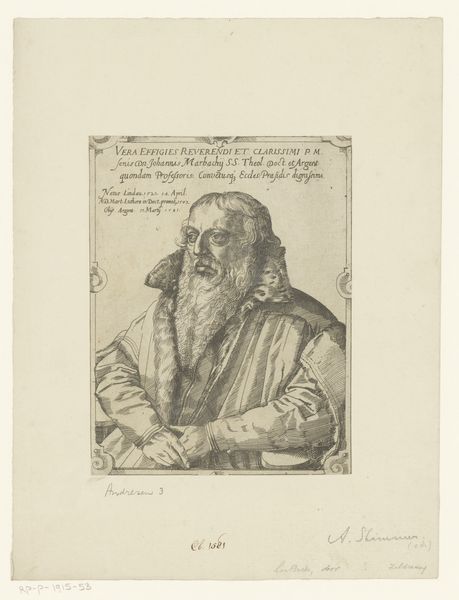
print, engraving
#
portrait
#
baroque
# print
#
old engraving style
#
classical-realism
#
figuration
#
line
#
portrait drawing
#
history-painting
#
engraving
Dimensions: height 217 mm, width 180 mm
Copyright: Rijks Museum: Open Domain
Jerome David made this portrait of Socrates in the 17th century, using etching. This process involves coating a metal plate with wax, scratching an image into the wax, and then bathing the plate in acid. The acid bites into the exposed metal, leaving behind an image that can then be printed. Notice the density of marks used to create the illusion of light and shadow, and the long flowing lines that make up the beard and hair. Etching was a relatively quick and efficient way to produce images, making them more widely available, like printed books. Consider the labor involved in creating this print: the skilled hand of the artist, the time spent preparing the plate and printing the image, and the resources required to produce the materials. By understanding the means of production, we can appreciate the social and cultural significance of this image, and how it reflects the values and priorities of its time.
Comments
No comments
Be the first to comment and join the conversation on the ultimate creative platform.
